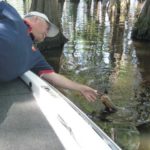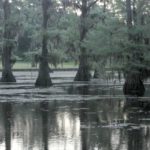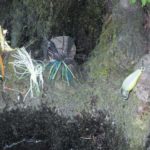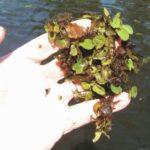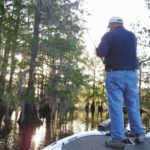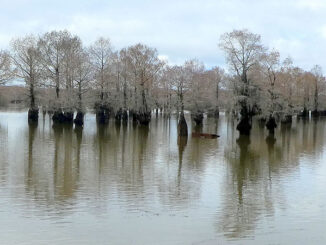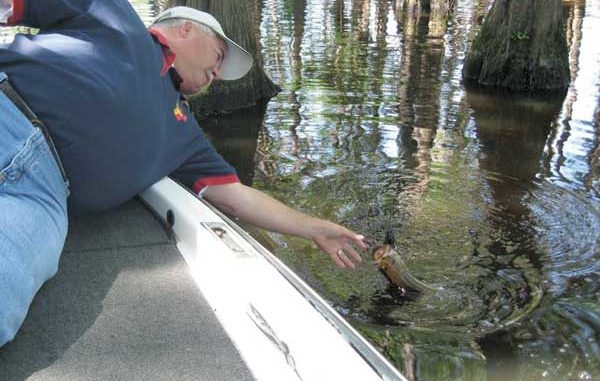
Lake Bistineau takes anglers back to a chapter when summers were easy and fishing was great.
As a youngster growing up in Goldonna, the latter part of May served notice that I was on the cusp of something extra special. School was about to dismiss for the summer, which meant three months of sweet freedom was within my grasp as the last yellow bus of the school year disappeared in a cloud of dust down the gravel road.
High on the list of things to do, now that algebra and English no longer stood in the way, was fishing. While I had ready access to the creek and pond behind the house, the lakes near our community seemed to be calling my name. Black Lake and Saline Lake were no more than a half-hour’s drive away, and it was here I could spend unfettered hours beneath the cool green cypresses after bass and big bluegills.
I took a trip recently that transported me back in my mind to Black and Saline. These two lakes have a first cousin located west of Ringgold — Lake Bistineau. Drifting silently beneath the tender fronds of the Spanish moss-laced cypresses, I could just as easily have been easing my way around Black or Saline decades ago.
Lake Bistineau is classified as one of the so-called “raft” lakes that emerged in low-lying areas along the Red River in the early 1800s. For decades, the river was clogged with logs, fallen trees and debris that spread its waters out into low lands adjacent to the river. What would eventually become Lake Bistineau was one of these swampy areas that was land-locked once the Red was cleared of logs around 1870.
In 1938, a dam was constructed across Bayou Dorcheat, and water spread over thousands of acres to form what is now Lake Bistineau. In 1951, the dam was raised an additional 4 feet to create the 17,200-acre lake as it is today.
Russ McVey, 44-year-old environmental consultant, spends his free hours working as a fishing guide on the Red River, Caddo Lake and Lake Bistineau. McVey guides under the banner of several sponsors, including Bandit Lures, Tru-Tungsten worm weights, Wave Worm, Southpaw Jigs and Owner Hooks.
“I grew up near the lake and still live within three minutes of the launch ramp,” he said. “Bistineau is my ‘home’ lake, and has been my favorite place to fish since I was old enough to hold a fishing pole.”
As he flipped a jig around the numerous cypress trees on the lake, he reminisced about his early memories of fishing Bistineau.
“My dad got me into bass fishing this lake. He had a 12-foot jonboat with a 7½-horse motor, and I sat on the front with a paddle, serving as his troll motor,” McVey recalled, chuckling. “I learned the lake and watched how my dad fished it, and then as I grew older, another gentleman, Ken Johnson, who passed away last year, taught me some bass-fishing techniques I’d never heard of before.
“He showed me how to find the bream beds, where the crappie were likely to be spawning and taught me how bass love to hang close to the trunks of cypress trees. One thing I learned from Ken was how to fish a jig and the importance of getting the bait as close to the tree trunk as possible. He used to tell me you needed to put the jig between the bark and the trunk.”
During our day on the lake, it was obvious that McVey had learned his lesson well as to how to fish a jig effectively. His accuracy with the jig was such there was no doubt in my mind he could gently drop one in a snuff box at 30 paces with scarcely a “plink” to be heard. I noted as well that the jig slipped into the water with barely a ripple.
“When the bass are not aggressive,” McVey explained, “you need to ease the bait into the water to keep from spooking them. I’d say that 80 percent of the year, you’ll find the bass next to the cypress trees on this lake.”
On the day we fished, the bass definitely were not aggressive. A strong storm with rain, wind, hail, lightning and thunder had swept over the lake the night before our trip. On the day we fished, we were greeted with bright blue skies, high barometer, north wind and unusually chilly temperatures for May.
“Another thing that is having an effect on bass today is they’re in a post-spawn mode. After the spawn, they’re not aggressive, and add to this the unsettled weather and the bite will be slow,” McVey said.
Even so, McVey caught a few fish under conditions that would have skunked the average fisherman.
McVey discussed the lures that have worked best for him on Bistineau over the years.
“If I could only fish with five baits, on one rod I’d have a Southpaw jig, 7/16-ounce in black/brown/amber with a black-neon trailer. On other rods I’d have a gold Rogue with an orange belly, a Bandit 100- or 200-series crankbait in Tennessee shad or fire tiger, a creature bait such as the Wave Worm Tiki Monkey fished Texas-rigged and a Pop R topwater lure. With these baits, you can catch fish in Bistineau,” he said.
As I watched him pitch a jig next to the trunks of the cypresses, McVey talked about the equipment he uses that works best for him.
“Learning how to effectively pitch and flip a jig is not something you can learn overnight,” he said. “It takes a lot of practice, plus you have to have the right equipment. Some people try to flip and pitch with a rod that is too limber. I like to use a stiff rod because it allows you to have control of the lure at all times.
“Your reel has to be the free-spool type that lets the line flow freely from the reel. I’ll fish a jig all year along around these trees but sometimes a soft lure, such as a Baby Brush Hog, seems to attract more bites.”
McVey pointed out another feature of Lake Bistineau that is especially inviting during the hot summer months.
“These cypress trees provide shade that is welcomed when the weather is really hot,” he said. “You can work your way back in there, and it’s five to 10 degrees cooler than it is sitting out under the sun.”
As we moved about among the cypresses, the creeping nemesis that is threatening the life of several lakes, Bistineau included, was evident. Giant salvinia, a floating and fast-growing aquatic plant, is steadily spreading over the lake, making some of the more shallow areas practically inaccessible.
“This stuff is bad,” McVey said. “You can’t fish under it, and you can’t run a motor through it, even though it is a floating plant. Should you be running down the lake and run into a mat of salvinia, it could be obscuring a log that has drifted up under the mat. You can tear up a motor in a hurry if you hit one.
“I really don’t know what can be done to stop the spread of this plant. I don’t know if man or machine is capable of ridding the lake of salvinia.
“One thing that fishermen and boaters absolutely must do is check their motor, their boat and trailer every time they leave the lake, making sure they remove every sprig of salvinia.”
McVey’s boat was littered with sprigs of the plant, and he spent several minutes making sure every piece was removed.
After leaving the lake, I visited with Jeff Sibley, fisheries biologist with the Minden LDWF office, who noted that the department is trying several ways to control the spread of the fast-growing plant. He reaffirmed McVey’s conviction about the necessity of making sure all parts of the plant are removed from boats, motors and trailers.
“A single sprig overlooked can start an infestation on another lake when a boater launches there,” Sibley said.
Bistineau is to undergo a drawdown this summer with a dual purpose — to control the spread of salvinia and to allow leaf litter that has accumulated around the cypress trees to deteriorate.
“By allowing the litter to decay, this will open spawning areas that have been covered by this leaf drop over the years,” Sibley said. “We’re planning a drawdown of the lake around July 15, and we plan to hold it down until the end of January 2009. We’re hoping for a hard freeze to kill most of the salvinia, and the plants left high and dry by the drawdown will hopefully be killed back.”
Other procedures are being used, including herbicide application and a particular species of weevil that has shown the ability to kill the plant, but for now, salvinia, a creeping green nemesis, is threatening to suck the very life out of this beautiful old lake.
